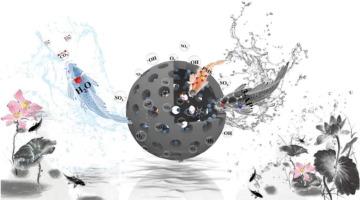Spatial confinement of Co-N/O nanocatalyst into hollow carbon nanosphere for water purification and its biotoxicity assessment
IF 13.3
1区 工程技术
Q1 ENGINEERING, CHEMICAL
引用次数: 0
Abstract
Spatial confinement of reactive oxygen species (ROS) with short life period and environmental contaminants into the theoretical diffusion scale has been undoubtedly deemed as a significantly promising strategy for intensifying mass transfer of ROS and environmental contaminants in heterogeneous advanced oxidation processes. Herein, the nanoconfined strategy was employed to encapsulate short-lived ROS at nanoscale for boosting the utilization efficiency of ROS in advanced oxidation processes. The nanoconfined Co-HCNs was synthesized by partial encapsulation of Co-N/O catalyst into hollow carbon nanospheres (HCNs) to activate peroxymonosulfate (PMS) for water decontamination. Fully physical characterizations highlighted that Co-HCNs exhibited a structure of hollow nanosphere, and Co-N/O catalyst, whose chemical charge was between 0 and 2, had been partially encapsulated into hollow carbon nanospheres. This kind of hollow nanospheres structure was successfully applied for interception of macro-molecule and access of small molecule in the selective degradation of 3-aminophenol (3-AP). Experiments collectively illustrated that SO4•- and 1O2 were the major reactive oxygen species in the Co-HCNs/PMS system. The bio-toxicity of 3-AP to wheat seeds and zebrafish greatly decreased to ecological environment safety standards after degradation by Co-HCNs/PMS system, which was illustrated by Ecological Structure Activity Relationship (ECOSAR) Model, seed germination experiments and zebrafish toxicology assays. This confinement of Co-N/O nanocatalyst into hollow carbon nanosphere is expected to provide a viable strategy for selective degradation of organic pollutants via size-exclusion.

求助全文
约1分钟内获得全文
求助全文
来源期刊

Chemical Engineering Journal
工程技术-工程:化工
CiteScore
21.70
自引率
9.30%
发文量
6781
审稿时长
2.4 months
期刊介绍:
The Chemical Engineering Journal is an international research journal that invites contributions of original and novel fundamental research. It aims to provide an international platform for presenting original fundamental research, interpretative reviews, and discussions on new developments in chemical engineering. The journal welcomes papers that describe novel theory and its practical application, as well as those that demonstrate the transfer of techniques from other disciplines. It also welcomes reports on carefully conducted experimental work that is soundly interpreted. The main focus of the journal is on original and rigorous research results that have broad significance. The Catalysis section within the Chemical Engineering Journal focuses specifically on Experimental and Theoretical studies in the fields of heterogeneous catalysis, molecular catalysis, and biocatalysis. These studies have industrial impact on various sectors such as chemicals, energy, materials, foods, healthcare, and environmental protection.
 求助内容:
求助内容: 应助结果提醒方式:
应助结果提醒方式:


